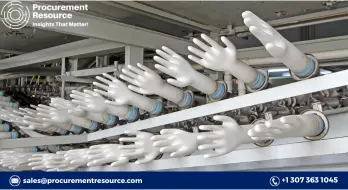ABS market dwindled in China amid feeble market sentiments

The Chinese ABS market has been faltering lately, with spot prices slipping downwards. On August 11, the price for ABS derivatives was registered at a dip of 0.24 percent (compared to August 1) and stood at 10,525 RMB/ton.
In the supply landscape, the ABS industry has been operating at high capacity, with the total operating rate hovering around 90%. This is a notable increase from the previous period. However, with this inflated activity, there is an abundant supply of goods, resulting in a noticeable uptick in inventory levels, which currently exceeds 150,000 tons. This increasing inventory has contributed to diminished support from the supply side for the spot market.
Request Access For the Latest Price Trends of Acrylonitrile Butadiene Styrene (ABS)
Regarding raw materials, the beginning of the month saw a downturn in the overall performance of the key upstream materials for ABS, including acrylonitrile, butadiene, and styrene. The acrylonitrile market, particularly, has struggled recently, with some regions experiencing price declines. Despite these acceptable prices, the supply chain is under pressure due to increasing construction positions downstream, and no substantial improvement in demand is evident.
Butadiene prices continued to rise this week, driven partly by ongoing increases in crude oil prices. Sinopec, a major player in the market, raised its quotation, reinforcing seller confidence. However, a rise in supply for export and downstream enterprises' intentions to sell raw materials have created significant pressure, dampening market sentiment.
Concurrently, the styrene market has been on a downward trajectory. Demand from downstream sectors remains weak, and despite high costs, a tension between supply and demand suggests that a short-term decline in the styrene spot market is likely.
Read More About Acrylonitrile Butadiene Styrene (ABS) Production Cost Reports - Get Free Sample Copy in PDF
On the demand side, downstream factories, including key terminal industries such as home appliances, display modest enthusiasm for stocking materials. The downstream operating rate remains constrained, attributed to seasonal factors and power restrictions. After ABS prices increased, manufacturers became less willing to accept higher costs, and procurement activities have become more cautious, resulting in subdued overall demand.
According to Procurement Resource, Chinese ABS prices were registered at 10,525 RMB/ton, skidding by 0.24 percent compared to August 1, 2023. The fluctuating prices of key upstream materials are weakening cost support for ABS. Despite petrochemical plants ramping up operations slightly, an accumulation of market inventory is occurring. With weak demand-side support and a prevailing trend of stagnant, rigid demand, the ABS market in China is expected to enter a phase of being rangebound in the near term.


